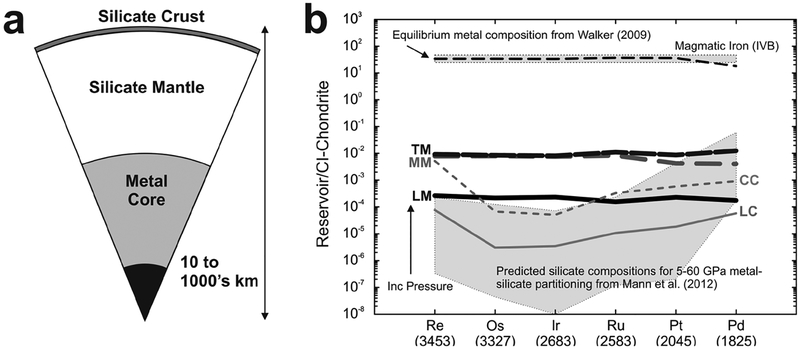Figure 1.
(a) Schematic of a hypothetical differentiated rocky planetary body, broken into a metal core (solid inner = black; liquid outer = gray) and silicate mantle and crust. (b) Baseline distributions of highly siderophile elements (not including monoisotopic Rh and Au) in different core, mantle and crust reservoirs of Earth, the Moon and Mars (adapted from Day 2013). The mantles of Earth (terrestrial mantle [TM] = black stippled line), the Moon (lunar mantle [LM] = black line), and Mars (martian mantle [MM] = gray dashed line) have broadly chondritic relative abundances of the HSE, with the martian and terrestrial mantles having similar absolute abundances (~0.007–0.008 × CI Chondrite), and the Moon’s mantle being > 40 times more depleted in the HSE (~0.0002 × CI Chondrite). These patterns do not match predicted silicate compositions after core formation (Mann et al. 2012), suggesting that late-accretion addition of HSE-rich impactors may ultimately have been required to obtain chondritic relative HSE abundances in planetary mantles. Terrestrial continental crust (CC = thin gray dashed line) shows similar crust–mantle partitioning characteristics to the lunar crust (LC = thin gray line), indicating strong HSE fractionation during crustal growth. Data for equilibrium metal matches the least evolved magmatic iron meteorite HSE abundances (e.g., IVB iron meteorite Warburton Range; Walker et al. 2008). Reservoir data given in the tables and numbers beneath the elements are melting temperatures of pure elemental metals in Kelvin (Emsley 1991).

